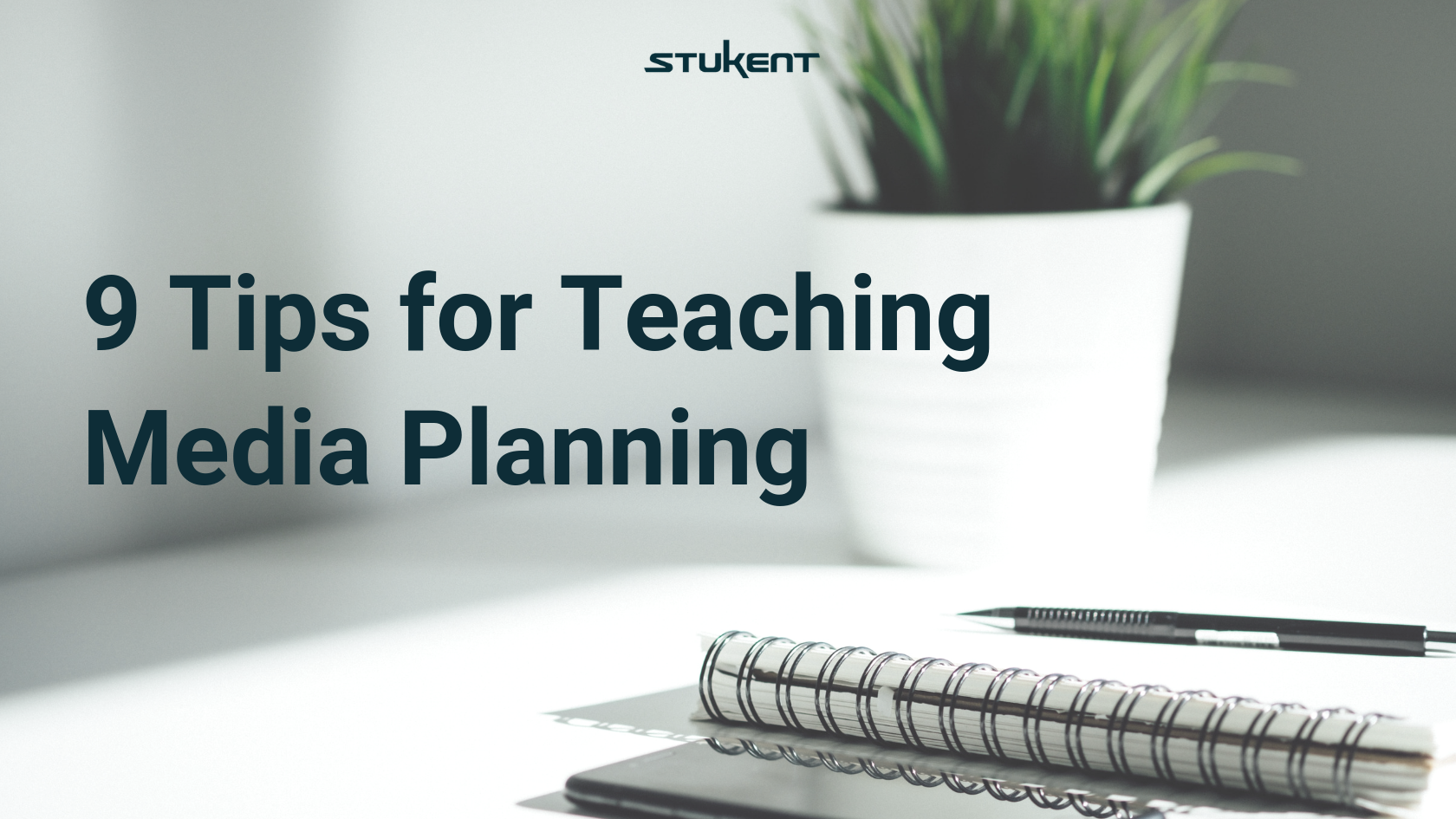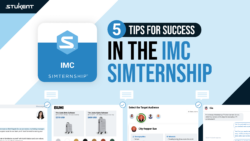Whether new to teaching media planning or looking for ways to keep on-going instruction on track, you have much to consider in order to present content that is both engaging and up to date. To help with the challenges you may face, here are nine tips to help build a successful media planning course.
Some of what follows is framed with the work of Syracuse University associate professor in advertising Beth Egan in her digital textbook “Media Planning Essentials,” which is updated twice a year to keep current.
Tip 1: Include the Background
Before a media plan is put into place, marketers should spend significant effort making sure the plan is sound. Students should see that media planning does not begin with placing ads on various platforms. Make sure students understand the value of building a media plan, including the setting of objectives, the establishment of a solid strategy, and the creation of a communications brief.

“Most unsuccessful campaigns can be traced back to an idea that didn’t have a clear purpose. The greatest ad campaigns start with the team having a clear idea of what they need to accomplish and then coming up with ideas that will do that,” according to Chapter 10 of “Media Planning Essentials.”
Tip 2: Teach Beyond Reach
Your course should be a place for students to learn that for media planners reaching audiences is not enough. Sure, companies can work to pinpoint what channels to use in connecting with audiences, but media planners have to move past this level of reach and move forward with plans to influence audiences — the kind of influence that invites consumer action to engage in solutions that meet customer needs.
Egan writes, “As consumers began DVR’ing, searching, scrolling and posting their own content on YouTube, Facebook, Twitter, and Snapchat, it was no longer a question of reaching audiences, it became a matter of influencing people.”
Yes, help students learn where to reach audiences. But also help them see that media planning is largely about understanding how to influence the actions of audiences.
Assign a project that gets students to see that when it comes to media, company advertisements are not just there — present in form of YouTube ads, search engine results, and via social media shares — but on specific media channels, aligned to audience schedules, and tailored according to demographics to have the most consumer influence.
Tip 3: Capitalize on Familiarity
Students know a lot about media. You can use that familiarity to an educational advantage. The idea is to help students use what they know as consumers of media to inform their understanding and application as marketers using media.
Have an assignment that requires students to look from a marketing perspective at the media they are already consuming. Ask students to draw conclusions relative to themselves as members of a target audience, the effectiveness of advertisement placement and frequency, and other metrics that you have presented in class. In short, bring learning into media contexts where students are already familiar with the environment.
Tip 4: Invite Technology In
This tip is about making use of — and not fighting — technology students are probably bringing into the classroom. After you have explained a concept in class, have students take out their phones and find a relevant example of what you have just presented. During class, invite students to use laptops to pull up definitions, search for recent articles, and find out what experts are saying.

Don’t spend significant time in the semester trying to get students to put their phones away. Spend educational time during the semester as students use their phones and other devices to learn about media planning.
Tip 5: Present a Bigger Picture
Knowing best practices for connecting businesses and target audiences is important — but so is recognizing that efforts to do so are often made in competitive markets with multiple companies pulling for consumer attention.
Teach students to be aware of what is going on in the larger context of an industry and specific product categories. Help them see media outreach from the perspective of consumers and to take into consideration what competing brands are doing, or not doing.
Students should learn what to look for when media planning, and there is a lot to look for in creating a marketing plan.
Tip 6: Remember Mobile
This is different than the tip to invite technology in. This is about giving significant instruction on the use of mobile as a marketing channel. In late 2018, the Interactive Advertising Bureau reported that “Mobile, which now accounts for nearly two-thirds (63 percent) of all digital ad revenue, continues to be the internet’s leading ad platform up from 54 percent of total revenues in half-year 2017.”

Media planning should include how mobile fits into a business’ strategy; media planning instruction should include how mobile fits into media planning.
Tip 7: Talk Employment Opportunities
Your class is a great avenue for students to become aware of what the professional world of media planning looks like. Have students do some digging into what positions and employers may be of interest to them as they search out employment and/or job-related, long-range goals. You could ask students to identify what skill sets are expected for specific marketing positions and research factors that would impact the starting of their own agencies.
In arranging for an employment-related discussion in class, you may want to start with the article “What Does a Media Planner Do?” from The Balance Careers.
Tip 8: Connect with Commspoint
Help provide students a solid starting position as they move forward into the job market by giving them instruction on and access to industry tools while they are students. The “Media Planning Essentials” digital textbook is paired with Commspoint Influence, “the leading global strategic planning platform that helps successful agencies to identify the right objectives for a campaign and then to help assemble the best combination of media with which to influence the consumers who the brand wishes to talk with,” according to Commspoint’s parent company, Pointlogic, which is owned by Nielsen.
Students enrolled in a course using the “Media Planning Essentials” and Commspoint Influence bundle get the media planning framework the text provides and discounted access to the industry-leading Commspoint tool usually just available to those in industry.
Egan calls Commspoint “one of the most powerful communications channel planning tools in the business.” She writes, “The Commspoint Influence tool uses extensive consumer and media expert surveys, as well as the latest data analytics techniques to isolate the best contact points for clients’ campaigns.”
Tip 9: Gain from Professional Perspective
Another way to bring industry into academics is by having media professionals present insights they have gained on the job. These presentations can give credence to communication theory and change the educational pace during a semester.
Consider those in your circles who may be a good fit for lending their expertise for a class period — former co-workers and students, other alumni of the school, and local professionals may all be willing to present. There are also Expert Sessions from Stukent, over 65 pre-recorded presentations from professionals, each with an accompanying quiz that can help enhance student learning. Each Expert Session is free to use in your class.
Successful Instruction
Yours is the opportunity to instruct students as they prepare for a robust industry. These nine tips can help you in that instruction as you deliver content and experiences that will make positive impacts.
Get more information on Beth Egan’s “Media Planning Essentials” digital textbook and accompanying access to Pointlogic’s Commspoint Influence for your classroom.






